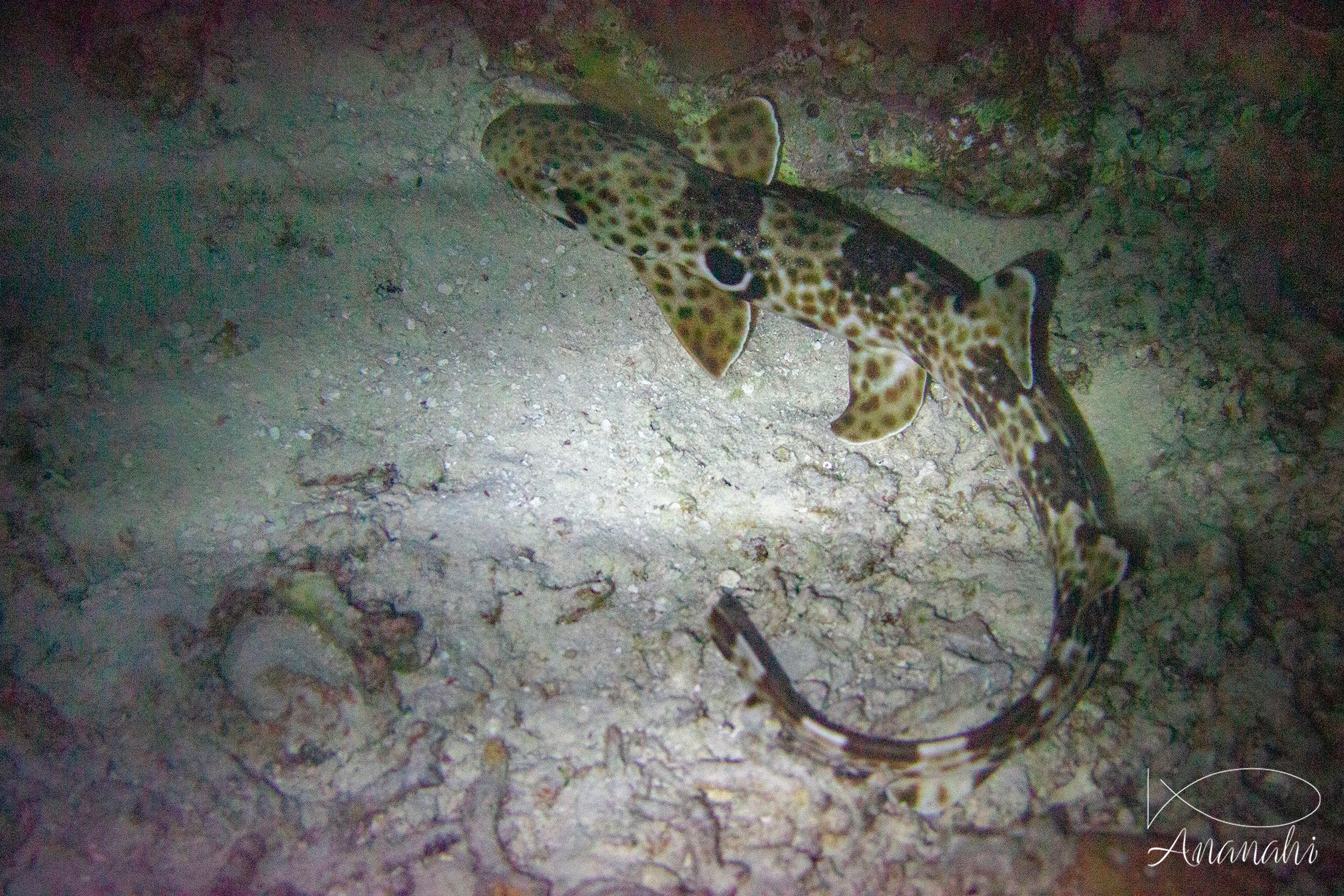
Scientific name: Hemiscyllium ocellatum
Size: From 2,3 to 3,3 feet
Color: Beige and brown
Distinguishing feature: This fairly small shark crawls on the ground with these fins when moving. His body is composed of multiple brown and black spots.
Where did we see it: Raja Ampat

Scientific name: Hemiscyllium ocellatum
Size: From 2,3 to 3,3 feet
Color: Beige and brown
Distinguishing feature: This fairly small shark crawls on the ground with these fins when moving. His body is composed of multiple brown and black spots.
Where did we see it: Raja Ampat
This passive shark moves very little, you will have a better chance of seeing it move on a night dive!
It has two large black spots behind his head on each side of his body.
Unlike other sharks, they have to chew their food for 5 to 10 minutes. His teeth have disappeared to leave room for a flat surface to break the prey shell.
Mammals have a horizontal tail.
Fishes have a vertical fin.
The kakihona sushi (sushi wrapped in persimmon leaves) are really the best!
To eat them, you have to go to Nara!
We can hear the bull shark is very dangerous because of attacks near La Réunion island.
However, tens of them are living at 600 feet from the famous beach of Playa Del Carmen in Mexico. And there are no attacks.